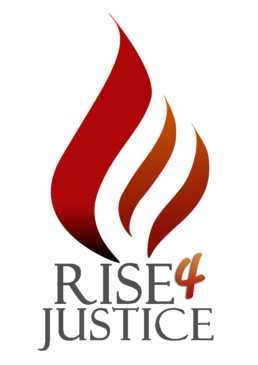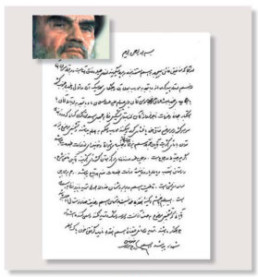In the summer of 1988, the Iranian regime summarily and extra-judicially executed tens of thousands of political prisoners held in prisons across Iran. The massacre was carried out on the basis of a fatwa by the regime’s then-Supreme Leader Khomeini.
THE FACTS
•More than 30,000 political prisoners were massacred in Iran in the summer of 1988.
• The vast majority of the victims were activists of the opposition PMOI (MEK) but the executions spread to other prisoners of conscious and political prisoners from leftist factions such as the Fedaian.
• All prisoners were sentenced to death unless the death committee decided otherwise.
• In past 3 decades all Justice Ministers of the regime have been directly involved in the 1988 Massacre. Including the Current Justice Minister, Alireza Avaei and the previous Minister under Rouhani, Mostafa Pour-Mohammadi, who boasted of his role in the Massacre.Participation in the 1988 massacre has been the litmus test of loyalty for key positions in the Iranian regime.
• The perpetrators of the 1988 massacre have never been brought to justice.
KHOMEINI'S DEATH DECREE
Mass executions of prisoners in 1988 begins with Khomeini’s death decree.
For years, Khomeini was able to suppress all decent within society under the pretext of being involved in a foreign war. In the final phases of the Iran-Iraq war, Khomeini who feared the awakening of decent and ignition of a new wave of resistance, decided to take his revenge on political prisoners. He issued a fatwa (religious decree) ordering the execution of anyone who had not “repented” and who was not willing to collaborate entirely with the regime.
The massacres began, and everyday hundreds of political prisoners were hanged and their corpses were buried hurriedly in mass graves all over major cities, in particular Tehran.
Khomeini stated in his decree: “Whoever at any stage continues to belong to the Monafeqin (the regime’s derogatory term to describe the PMOI/MEK- meaning hypocrite) must be executed. Annihilate the enemies of Islam immediately.” He added: “… Those who are in prisons throughout the country and remain steadfast in their support for the MEK/PMOI are waging war on God and are condemned to execution… It is naive to show mercy to those who wage war on God.”
THE DEATH COMMITEE
“Death Commission” of 1988 massacre of political prisoners
Khomeini formed what became known as “death commissions” for prisons comprised of three individuals: A representative of the Ministry of Intelligence, a religious judge and a prosecutor.The PMOI prisoners made up more than 90 percent of those taken before the “Death Commission.” The task of the Death Commission was to determine whether a prisoner was a so-called “Enemy of God” or not. In the case of Mojahedin prisoners, that determination was often made after only a single question about their party affiliation. Those who said “Mojahedin” rather than the derogatory “Monafeqin” were sent to be hanged.
KHOMEINI'S HEIR PROTESTS
The haste to execute was so abhorrent that some of Khomeini’s closest confidantes, most notably, Hossein Ali Montazeri, Khomeini’s heir apparent, had doubts and protested it. In letters to Khomeini, Montazeri urged for some leniency and slowing down. But Khomeini ordered there should be mercy for no one, including teenagers. He said pregnant women should not be spared or have the chance to give birth to their child and should be executed immediately.
In December 2000, Montazeri published his memoirs. The book revealed shocking documents on the atrocities committed by the clerical regime, none as horrendous as the massacre of 30,000 political prisoners in 1988 on the orders of Khomeini.
Montazeri’s book was not the first document informing the world of this massacre. News of the carnage had already begun to trickle through the iron curtain of censorship imposed by the mullahs to ensure a complete blackout on their crime.
“The greatest crime committed during the reign of the Islamic Republic, for which history will condemn us, has been committed by you. Your (names) will in the future be etched in the annals of history as criminals.”
MONTAZERI'S TAPE
On August 9, 2016, relatives of Hossein-Ali Montazeri, Khomeini’s former heir, published a shocking audio tape in which Montazeri can be heard telling a meeting of members of the “Death Committee” 28 years ago (August 15, 1988) that they are carrying out a crime against humanity. The Montazeri tape revealed new information about the scope and breadth of the massacre of political prisoners at the time. It has sent shockwaves in Iran and in particular among the regime’s officials who had for more than two decades attempted to impose an absolute silence on the massacre.
The clip also showed that the Iranian regime’s leaders who held positions of power since the beginning of the regime’s establishment must face justice for committing one of the most horrific crimes against humanity.
In the audio tape, Hossein-Ali Montazeri, who was subsequently dismissed as the heir by Khomeini, for these very remarks, tells members of the “death commission”, Hossein-Ali Nayyeri, the regime’s sharia judge, Morteza Eshraqi, the regime’s prosecutor, Ebrahim Raeesi, deputy prosecutor, and Mostafa Pourmohammadi, representative of the Ministry of Intelligence and Security (MOIS), “The greatest crime committed during the reign of the Islamic Republic, for which history will condemn us, has been committed by you. Your (names) will in the future be etched in the annals of history as criminals.” He adds, “Executing these people while there have been no new activities (by the prisoners) means that … the entire judicial system has been at fault.”
There are strong indications that Khomeini’s fatwa, which led to the massacre of some 30,000 political prisoners in Iran, was issued on July 26, 1988.
The Iranian regime has never acknowledged these executions, or provided any information as to how many prisoners were killed.
The majority of those executed were either serving prison sentences for their political activities or had already finished their sentences but were still kept in prison.
Some of them had previously been imprisoned and released, but were again arrested and executed during the massacre.
The wave of massacre of political prisoners began in late July and continued unabated for several months.
By the time it ended in the autumn of 1988, some 30,000 political prisoners, the overwhelming majority activists of the People’s Mojahedin Organization of Iran (PMOI or MEK), were slaughtered.
JUSTICE NOT SERVED YET
International assessment
“Over the years, a high number of reports have been issued about the 1998 massacres. If the number of persons who disappeared and were executed can be disputed, overwhelming evidence shows that thousands of persons were summarily killed. Recently, these killings have been acknowledged by some at the highest levels of the State. The families of the victims have a right to know the truth about these events and the fate of their loved ones without risking reprisal. They have the right to a remedy, which includes the right to an effective investigation of the facts and public disclosure of the truth; and the right to reparation. The Special Rapporteur therefore calls on the Government to ensure that a thorough and independent investigation into these events is carried out.”
Report of the Special Rapporteur on the situation of human rights in the Islamic Republic of Iran, 14 Aug 2017
“The extra-legal mass executions of political prisoners in the Islamic Republic of Iran in 1988 and the need to end the impunity for the perpetrators of this crime warrant and necessitate a UN Commission of Inquiry and we urge you to initiate and facilitate this. “
Joint written statement submitted by the Nonviolent Radical Party, Women’s Human Rights International Association, Edmund Rice International Limited, International Educational Development, Inc.
“There should be no impunity for human rights violations, no matter where or when they took place. The 1988 executions should be subject to an independent impartial investigation, and all those responsible should be brought to justice, and receive appropriate penalties”
Amnesty International
“The massive extrajudicial killings of political prisoners in various Iranian prisons during the summer of 1988 constitute, without any doubt, a crime against humanity. The scale of executions, the common pattern and proceedings and the convergence of testimonies substantiate that those killings were widespread and systematic. In addition, there is no doubt that victims were persecuted for their political and religious or non-religious beliefs.”
– FIDH (International Federation for Human Rights)
The House of Representatives urges the United Nations Special Rap¬por¬teur on the human rights situation in Iran and the United Nations Human Rights Council to create a Commission of Inquiry to fully investigate the massacre and to gather evidence and identify the names and roles of specific perpetrators with a view towards bringing them to justice.
-H Res. 188- 115th Congress (2017-2018)
“This house urges the Government to recognise and condemn this brutal massacre as a crime against humanity and ask the UN Human Rights Commissioner, Human Rights Council, the General Assembly and the Security Council to order an investigation and bring the perpetrators to justice.”
– Early Day Motion 448- British House of Commons
“On the 29th anniversary of the 1988 mass extra-legal executions of political prisoners in the Islamic Republic of Iran, we believe that until the full truth is unveiled and the perpetrators are held to account for their crimes, there will be no incentive for the government of Iran to change its policy on human rights. This is why we are calling on the United Nations to launch an independent inquiry into the 1988 massacre to reveal the truth, hold the perpetrators to account and seek justice, reparation and guarantees of non-recurrence.”
– Joint written statement submitted by France Libertés, Women’s Human Rights International Association, MRAP
Justice: stepping stone for preventing future atrocities
The massacre of 1988 remains to be one of the darkest stains in modern history, as one of the least exposed and discussed massacres, where the perpetrators of this crime to this day are guarded with impunity.
Human rights experts have described it as the greatest crime against humanity in the 20th Century following World War II that has gone unpunished.
It is the darkest irony of this very dark episode, that of all its human rights violations the Iranian regime has been most successful at keeping the 1988 killings a secret from the international community and even from many Iranians, until recently.
Not only has there been no prosecution of the criminals who orchestrated and carried out that summer’s gruesome murders, but until recently the regime continued to deny that they even occurred.
The pervasive silence of the past 3 decades must be shattered. The UN needs to launch an independent investigation into one of the most hideous crimes against humanity after the Second World War.


